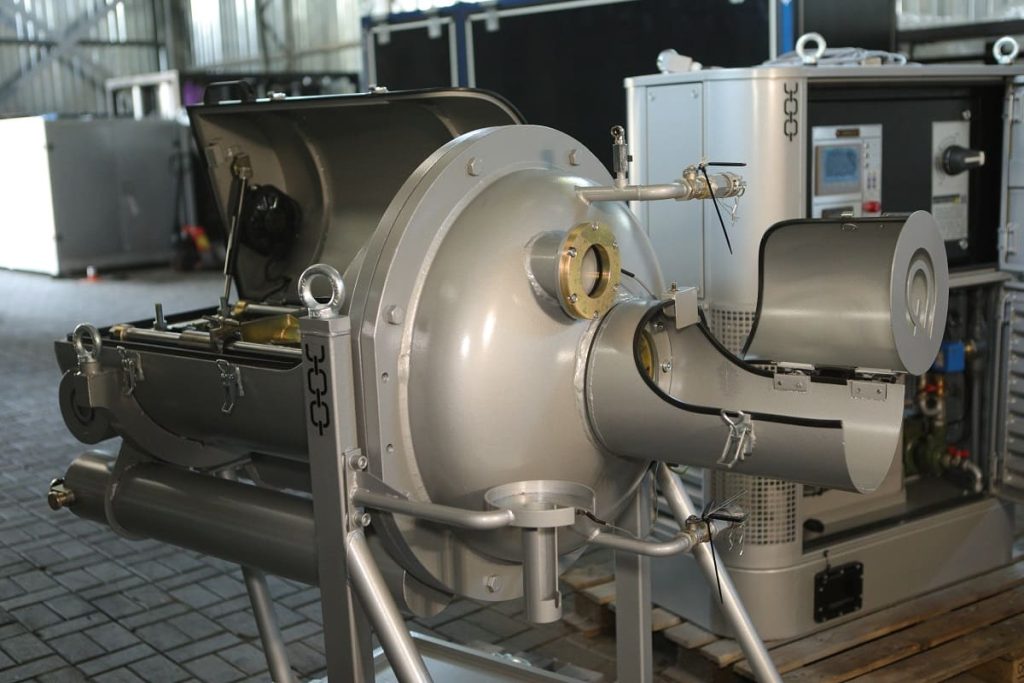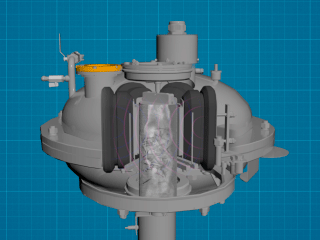Additive manufacturing is expanding production and seeking auxiliary technologies. One of them is the involvement of vortex layer device (AVS) – convenient tools for creating raw materials for 3D printers faster and better.
It should be noted that new methods of manufacturing parts began to emerge in the early 1980s. People wanted to save and produce objects without removing “excess” material, as is the case with traditional mechanical processing technology. The innovation was to create a product layer by layer according to a three-dimensional model (3D model) by adding plastic, ceramic, or metal powders, “binding” them in a thermal, diffusion, or adhesive manner. These additive technologies have moved from manufacturing paper and plastic prototypes to directly obtaining finished functional products over three decades. Today, additive manufacturing allow the creation of metal or non-metal prototypes and functional products that do not require mechanical post-processing.
Watching a 3D printer work is a fascinating sight. Here it is creating a human joint. Here comes a sneaker, and here – an element of the wall of a future house. Additive technologies allow the production of parts or entire products for various industries. They are most commonly used in construction, light industry, agriculture, machine and shipbuilding, space exploration, medicine, and pharmacology.
Additive technologies typically use powders made from plastics, metals, and natural minerals, and composite fluids.
Additive technologies and vortex layer device of ferromagnetic particles
The company GlobeCore has been implementing a vortex layer device (AVS) for many years for the production, among other things, of monodisperse micropowders – raw materials required by additive technologies.
Let’s recall the generally accepted division of abrasives according to grain size: grinding grit – 2000-160 microns, grinding powders – 125-40 microns, micropowders – 63-14 microns, fine grinding powders – 10-3 microns.
AVS can grind raw materials down to the level of micropowders and fine grinding powders. Grinding and mixing in a vortex layer device are carried out by rotating cylindrical ferromagnetic bodies in the working chamber, which move due to the magnetic field. Their diameter varies from 0.5-5 mm, length – 5-60 mm, and the number can range from several tens to several thousand pieces (0.05-20 kg) depending on the size of the inductor. They rotate simultaneously, constantly touching each other and creating a so-called vortex layer device through which the processed material and substances pass. The installation works in both periodic and continuous modes.
Illustration of the principle of operation of the vortex layer apparatus of the company GlobeCore
Efficient grinding and mixing in AVS take place within a few seconds or minutes, while traditional mills take hours for these processes. Moreover, vortex layer device are virtually noiseless and consume little electricity compared to traditional ball or vibratory mills. However, the main advantage of AVS is that they can handle any complex materials and compositions.
Experimental Results
Vortex layer devices from GlobeCore were initially used for grinding cement, bentonite, and glass. During an experiment at the company, 300 grams of glass fragments were ground in a VLD and within a minute, they turned into a monodisperse powder with a grain size of 0.4 mm. Here is some data from one of the company’s clients regarding cement grinding.
|
Volume fraction of particles, % |
|||||
| Particle size, μm | 10 | 50 | 90 | 95 | 99 |
| Grinding time 30 s | 3,6 | 18,3 | 36,6 | 42,2 | 52,3 |
| Grinding time 60 s | 2,9 | 15,3 | 30 | 34,3 | 42,1 |
| Grinding time 90 s | 2,5 | 13,3 | 27,5 | 31,6 | 39,2 |
Over the years of refining the vortex layer device technology, GlobeCore’s engineers have worked with various interesting materials. Among them was silumin – an aluminum-silicon alloy designed for creating complex-shaped parts. They produced micropowder from graphite – graphene. Interestingly, this promising alternative to conventional silicon will contribute to the emergence of a new class of nanoelectronics in the future.
AVS successfully works with superhard materials. For example, the State Research Institute of Titanium conducted a study on its profile metal using a vortex layer device. According to scientists, the grinding was successful: pure titanium powders reduced the fractional composition by approximately 50%, and hydrogenated titanium materials by 85%.
This was not the only case of working with high-strength metal.
– Once, GlobeCore processed titanium powder residues that remained with a client after working with a 3D printer. It contained impurities and oxides that needed to be removed. We managed to do this in the AVS-150 device: we “washed” 1 kg of titanium powder by adding alcohol to the working chamber, – says Vitaliy Kolisnyk, the manager of GlobeCore‘s foreign economic activity.
As we can see, additive manufacturing and their owners receive additional incentives for the development of the industry. First and foremost, such an approach to production makes small-scale manufacturing profitable in all spheres. Manufacturing even a single unit order using a 3D printer is profitable, as it does not require prior creation of a mold or model.
At the same time, additive technologies + vortex layer devices make 3D printing not only profitable but also a competitive business. This combination speeds up order execution. AVS allow the creation of exclusive micropowders, unique mixtures, complex compositions in the form of homogeneous masses, suitable for the production of objects of any complexity.




